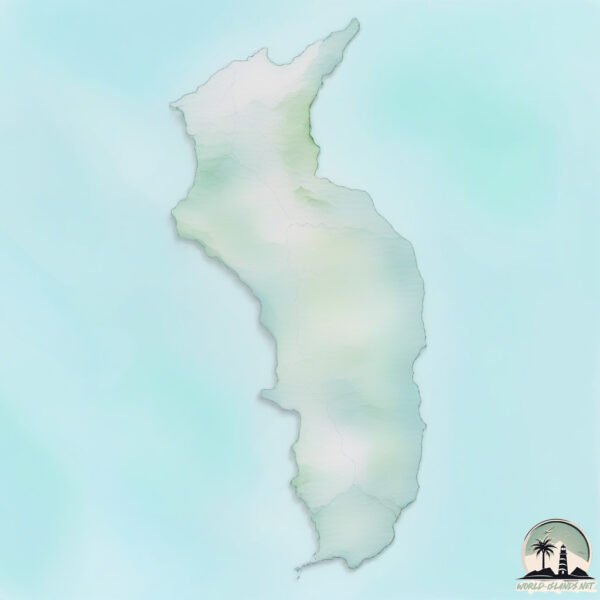Guadelloupe

Welcome to Guadelloupe, a Dry island in the North Pacific Ocean, part of the majestic Pacific Ocean. This guide offers a comprehensive overview of what makes Guadelloupe unique – from its geography and climate to its population, infrastructure, and beyond. Dive into the details:
- Geography and Size: Explore the island’s size and location.
- Climate and Weather: Weather patterns and temperature.
- Topography and Nature: Uncover the natural wonders of the island.
- Infrastructure and Travelling: Insights on reaching, staying, and making the most of your visit.
- News and Headlines: Latest News.
Geography and size of Guadelloupe
Size: 245.9 km²
Coastline: 107.8 km
Ocean: Pacific Ocean
Sea: North Pacific Ocean
Continent: North America
Guadelloupe is a Large Island spanning 246 km² with a coastline of 108 km.
Archipel: –
Tectonic Plate: Australia – A major tectonic plate covering Australia, New Zealand, and parts of the Indian and Pacific Oceans, known for its relative stability and occasional seismic activity.
The geographic heart of the island is pinpointed at these coordinates:
Latitude: 29.04009407 / Longitude: -118.28476679
Climate and weather of Guadelloupe
Climate Zone: Dry
Climate Details: Cold Desert Climate
Temperature: Cold
Climate Characteristics: Similar in dryness to hot deserts but with cold winters. Days can be warm or hot, while nights are typically chilly with common frost occurrences.
Topography and nature of Guadelloupe
Timezone: UTC-08:00
Timezone places: America/Los_Angeles
Max. Elevation: 1216 m
Mean Elevation: 546 m
Vegetation: Herbaceous Cover
Tree Coverage: 17%
The mean elevation is 546 m. The highest elevation on the island reaches approximately 1216 meters above sea level. The island is characterized by Mountains: High, steeply elevated landforms. Characterized by both a high maximum elevation (over 500 meters) and a high mean elevation, creating rugged, mountainous terrains on islands.
Dominating Vegetation: Herbaceous Cover
Comprising mainly of grasses, herbs, and ferns, these areas are common in prairies, meadows, and savannas, and can vary widely in species composition. Guadelloupe has a tree cover of 17 %.
Vegetation: 11 vegetation zones – Exceptionally Diverse Island
Islands with more than ten vegetation zones are among the most ecologically rich and varied in the world. These islands are akin to miniature continents, boasting an incredible array of ecosystems. The sheer range of habitats, from high peaks to deep valleys, rainforests to deserts, creates a mosaic of life that is unparalleled. They are crucial for conservation and ecological studies.
Infrastructure and Travelling to Guadelloupe
Does the island have a public airport? no.
There is no public and scheduled airport on Guadelloupe. The nearest airport is Ensenada International Airport / El Cipres Air Base, located 343 km away.
Does the island have a major port? no.
There are no major ports on Guadelloupe. The closest major port is ENSENADA, approximately 348 km away.
The mean population of Guadelloupe is 0 per km². Guadelloupe is Uninhabited. The island belongs to Mexico.
The name of the island resonates across different cultures and languages. Here is how it is known around the world: Arabic: جزيرة غوادالوبي; German: Guadalupe; Spanish: Isla Guadalupe; French: île Guadalupe; Portuguese: Ilha de Guadalupe; Russian: Гуадалупе; Chinese: 瓜達盧普島
Continuing your journey, Cedros is the next notable island, situated merely km away.
Guadeloupe's Top Beaches



Mexico is classified as Emerging region: MIKT: Mexico, Indonesia, South Korea, and Turkey – Economies recognized for their development potential and emerging market status. The level of income is Upper middle income.
News – Latest Updates and Headlines from Guadelloupe
Stay informed with the most recent news and important headlines from Guadelloupe. Here’s a roundup of the latest developments.
Please note: The data used here has been primarily extracted from satellite readings. Deviations from exact values may occur, particularly regarding the height of elevations and population density. Land area and coastline measurements refer to average values at mean high tide.
